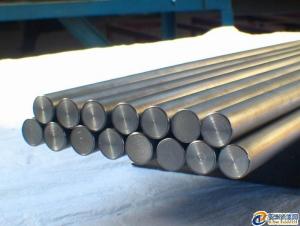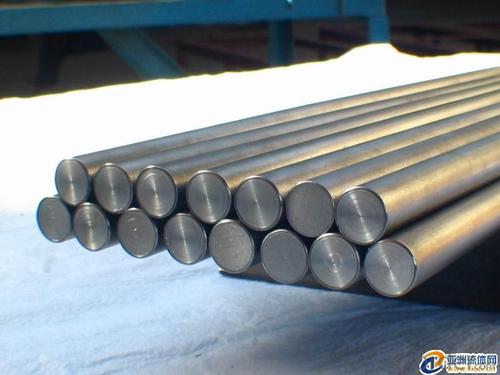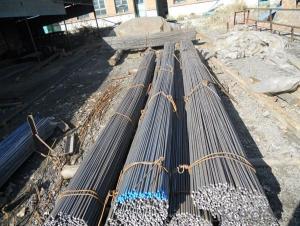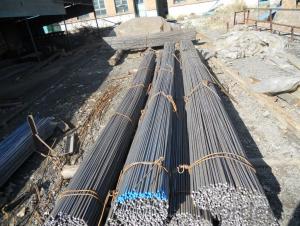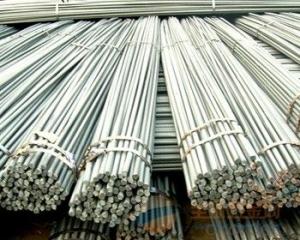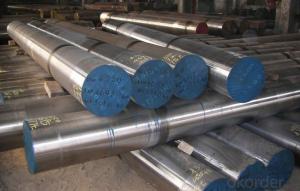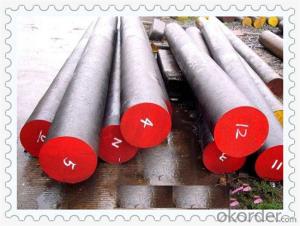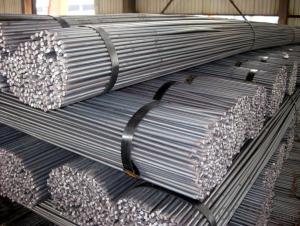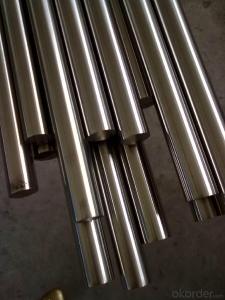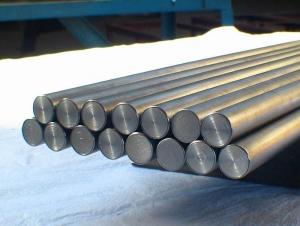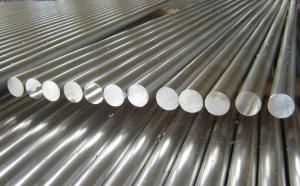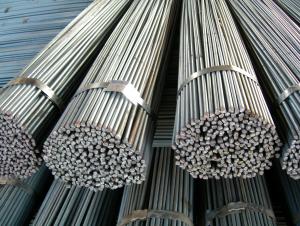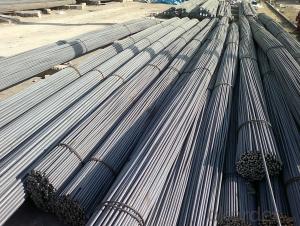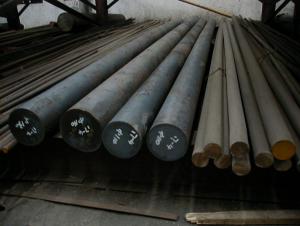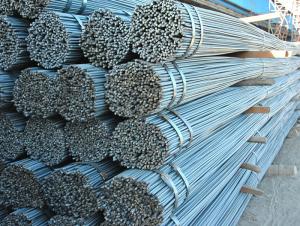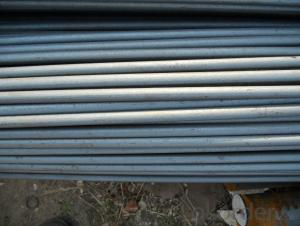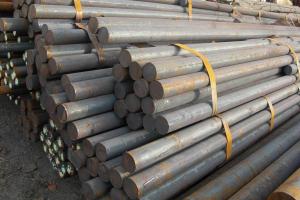High Quality Round Bar Q195 Q235 Hot Rolled 5-28mm
- Loading Port:
- China Main Port
- Payment Terms:
- TT or LC
- Min Order Qty:
- -
- Supply Capability:
- -
OKorder Service Pledge
OKorder Financial Service
You Might Also Like
Product Description:
OKorder is offering High Quality Round Bar Q195 Q235 Hot Rolled 5-28mmat great prices with worldwide shipping. Our supplier is a world-class manufacturer of steel, with our products utilized the world over. OKorder annually supplies products to European, North American and Asian markets. We provide quotations within 24 hours of receiving an inquiry and guarantee competitive prices.
Product Applications:
1) Suitable for making various strong cutting tool abrasion resistance, impact resistance.
2) Used to produce all kinds of high hard and super hard saw blade, drill, tap, broach, gear hob and various kinds of milling cutter.
3) Used for advanced punching die, screw die, and the toughness and complicated shape of the punch, etc.
4) Is used for cold forging die and drawing mode, etc.
5) Recommended watchcase factory, screw factory and other cold stamping products industry use.
Product Advantages:
OKorder's High Quality Round Bar Q195 Q235 Hot Rolled 5-28mm are durable, strong, and resist corrosion.
Main Product Features:
· Premium quality
· Prompt delivery & seaworthy packing (30 days after receiving deposit)
· Corrosion resistance
· Can be recycled and reused
· Mill test certification
· Professional Service
· Competitive pricing
Product Specifications:
1. Grade: GB, JIS, ASTM, EN
2. Grade: Q235, SS400, A36, S235JR
3. Diameter and mass: As below
Diameter | Mass | Diameter | Mass | Diameter | Mass |
(mm) | (kg/m) | (mm) | (kg/m) | (mm) | (kg/m) |
6 | 0.22 | 22 | 2.98 | 53 | 17.30 |
7 | 0.30 | 24 | 3.55 | 56 | 19.30 |
8 | 0.40 | 25 | 3.85 | 60 | 22.20 |
9 | 0.50 | 26 | 4.17 | 63 | 24.50 |
10 | 0.62 | 28 | 4.83 | 65 | 26.00 |
11 | 0.75 | 30 | 5.55 | 70 | 30.20 |
12 | 0.89 | 32 | 6.31 | 75 | 34.70 |
13 | 1.04 | 34 | 7.13 | 80 | 39.50 |
14 | 1.21 | 36 | 7.99 | 85 | 44.50 |
15 | 1.39 | 38 | 8.90 | 90 | 49.90 |
16 | 1.58 | 40 | 9.86 | 95 | 55.60 |
17 | 1.78 | 42 | 10.90 | 100 | 61.70 |
18 | 2.00 | 45 | 12.50 | 120 | 88.85 |
19 | 2.23 | 48 | 14.20 | 140 | 120.93 |
20 | 2.47 | 50 | 15.40 | 150 | 138.82 |
4. Material: Mild Steel
5. Heat treatment of high quality steel:
Fire: Isothermal annealing temperature is 800 ~ 880 °C, with 10 ~ 20 °C, the furnace cooling to about 600 °C, hardness above HB269.
Preheat temperature: 730-730 °C
Quenching temperature: 1190-1210 °C
Tempering temperature: 540-595 °C
Cold drawn, hardness 285 HBS
Cold drawn after annealing condition, hardness 277 HBS
Quenching methods: oil quenching, air cooling or salt bath quenching
FAQ:
Q1: Why buy Materials & Equipment from OKorder.com?
A1: All products offered byOKorder.com are carefully selected from China's most reliable manufacturing enterprises. Through its ISO certifications, OKorder.com adheres to the highest standards and a commitment to supply chain safety and customer satisfaction.
Q2: How do we guarantee the quality of our products?
A2: We have established an advanced quality management system which conducts strict quality tests at every step, from raw materials to the final product. At the same time, we provide extensive follow-up service assurances as required.
Q3: How soon can we receive the product after purchase?
A3: Within three days of placing an order, we will begin production. The specific shipping date is dependent upon international and government factors, but is typically 7 to 10 workdays.
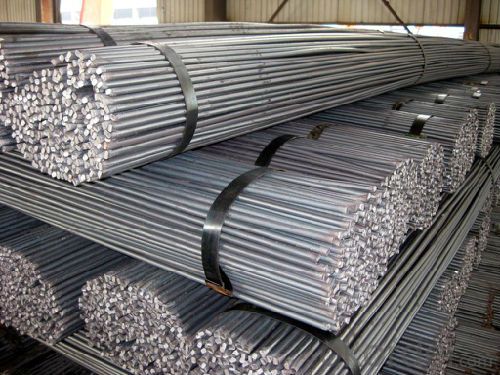
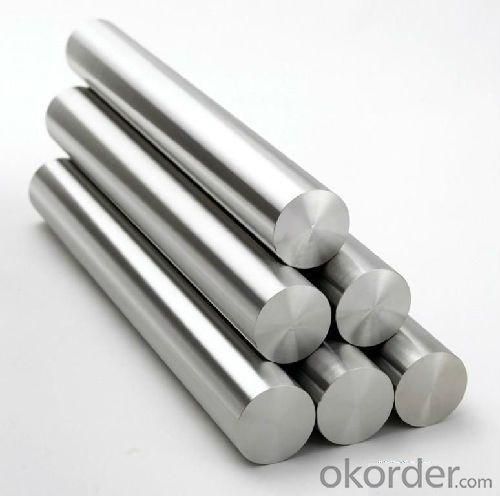
- Q: How do you determine the strength of a steel round bar?
- The strength of a steel round bar can be determined through various methods, including physical testing and material specifications. One common method is to conduct a tensile test, which involves pulling the bar until it reaches its breaking point. This test helps determine the ultimate tensile strength (UTS) of the steel, which is the maximum stress it can withstand before fracturing. The UTS is typically measured in units of force per unit of cross-sectional area, such as pounds per square inch (psi) or megapascals (MPa). Another important strength property to consider is the yield strength. This is the stress level at which the steel starts to deform permanently, without any increase in load. The yield strength is crucial in determining the structural integrity of the bar, as it indicates the maximum load it can bear without undergoing plastic deformation. In addition to physical testing, the strength of a steel round bar can also be determined by its material specifications. Steel manufacturers provide information about the composition and mechanical properties of their products. This includes details about the steel grade, which indicates the alloying elements present in the steel and their concentrations. Different steel grades have varying strength properties, which can help determine the strength of the round bar. It is important to note that the strength of a steel round bar may also be influenced by other factors, such as heat treatment or surface conditions. Heat treatment processes like quenching and tempering can enhance the strength and hardness of the steel, while surface conditions like coatings or treatments can improve corrosion resistance. To accurately determine the strength of a steel round bar, it is recommended to consult the material specifications provided by the manufacturer and consider conducting physical tests, such as tensile testing, if necessary.
- Q: Can steel round bars be bent or formed?
- Yes, steel round bars can be bent or formed. The ability of steel round bars to be bent or formed depends on various factors such as the type of steel, the diameter and thickness of the bar, and the method used for bending or forming. Steel round bars can be bent or formed using different techniques, including hot bending, cold bending, and mechanical bending. Hot bending involves heating the steel round bar to a specific temperature and then bending it into the desired shape. Cold bending, on the other hand, does not require heating and can be done using hydraulic or manual bending machines. Mechanical bending involves the use of specialized machinery to apply force and bend the steel round bar. However, it is important to note that excessive bending or forming can weaken the steel round bar and affect its structural integrity. Therefore, it is crucial to follow proper bending and forming techniques and consider the limitations and specifications provided by the manufacturer or industry standards.
- Q: What is the difference between a centerless ground and a precision ground steel round bar?
- A centerless ground steel round bar is manufactured by grinding the outer diameter of the bar using a centerless grinding machine. This process ensures that the bar has a consistent diameter throughout its length, with tight tolerances for dimensional accuracy. On the other hand, a precision ground steel round bar is typically manufactured using a different grinding method where the bar is held between centers and ground to achieve precise dimensions and surface finish. This process allows for even tighter tolerances and finer surface finishes than centerless grinding. In summary, while both centerless ground and precision ground steel round bars offer dimensional accuracy, the precision ground bar provides even tighter tolerances and superior surface finish due to the use of a different grinding method.
- Q: What is the corrosion resistance of steel round bars?
- The corrosion resistance of steel round bars is contingent upon the type of steel used and the environmental conditions to which they are exposed. Generally, stainless steel round bars exhibit outstanding resistance to corrosion due to the inclusion of chromium, which generates a protective layer of oxide on the steel's surface. This oxide layer acts as a barrier, impeding further corrosion. On the other hand, carbon steel round bars are more vulnerable to corrosion, particularly in environments with high levels of moisture or exposure to corrosive substances. In such cases, additional measures such as coatings or galvanizing may be necessary to enhance their resistance to corrosion. It should be noted that the performance of steel round bars in corrosive environments is influenced by various factors, including temperature, pH level, and the presence of other elements or chemicals. Therefore, it is advisable to consider the specific application and seek guidance from corrosion experts in order to determine the most suitable steel grade and corrosion protection measures for your requirements.
- Q: What are the different methods used for machining steel round bars?
- There are several methods used for machining steel round bars, including turning, milling, drilling, and grinding. Turning involves rotating the bar against a cutting tool to create a desired shape. Milling utilizes rotary cutters to remove material from the bar's surface. Drilling involves creating holes in the bar using a drill bit. Grinding uses an abrasive wheel to smooth or shape the bar's surface. These methods may be used individually or in combination, depending on the desired outcome and the specific requirements of the project.
- Q: How do steel round bars compare to aluminum or steel tubing?
- Steel round bars, aluminum tubing, and steel tubing all have their own unique properties and applications, so it is important to understand the characteristics of each material before making a comparison. Steel round bars are solid cylindrical bars made of steel. They are known for their high strength and durability, making them suitable for heavy-duty applications. Steel round bars have excellent tensile strength and can withstand high levels of stress and pressure. They are often used in construction, manufacturing, and engineering projects where strength and structural integrity are crucial. Steel round bars are also highly resistant to corrosion, making them suitable for outdoor and marine applications. Aluminum tubing, on the other hand, is made from aluminum, which is a lightweight and corrosion-resistant material. Aluminum tubing is known for its excellent thermal conductivity and electrical conductivity. It is often used in applications where weight reduction is important, such as in the aerospace and automotive industries. Aluminum tubing is also commonly used in the construction of heat exchangers and in electrical wiring systems due to its conductivity properties. Steel tubing, similar to steel round bars, is made of steel but is hollow in shape. Steel tubing is known for its versatility and wide range of applications. It is available in various shapes and sizes, including round, square, and rectangular, allowing for different structural designs. Steel tubing is often used in construction, automotive manufacturing, and industrial applications. It offers high strength and rigidity, making it suitable for applications that require structural support or the ability to withstand heavy loads. In comparison, steel round bars offer superior strength and durability compared to aluminum and steel tubing. They are ideal for heavy-duty applications that require high levels of strength and structural integrity. However, steel round bars can be heavier and more expensive than aluminum tubing, which is often preferred for lightweight applications. Steel tubing, on the other hand, provides versatility in terms of shape and size, allowing for more design options. Ultimately, the choice between steel round bars, aluminum tubing, and steel tubing depends on the specific requirements of the application, including factors such as strength, weight, cost, and corrosion resistance. It is important to carefully evaluate these factors and consult with experts to determine the most suitable material for a particular project.
- Q: What is the difference between a rough turned and a seamless steel round bar?
- A rough turned steel round bar refers to a metal bar that has undergone a preliminary turning process, where excess material is removed to achieve a rougher surface finish. This process helps to create a more uniform diameter and removes any surface imperfections or irregularities. Rough turned bars are commonly used in applications where a smooth surface finish is not a requirement, such as in manufacturing machinery or agricultural equipment. On the other hand, a seamless steel round bar is a solid metal bar that is formed without any welding or seams. It is manufactured through a process called piercing, where a solid billet is heated and then pierced with a mandrel to create a hollow tube. The tube is then elongated and reduced in diameter through a series of rolling and drawing processes until it reaches the desired dimensions. Seamless round bars are known for their superior strength and resistance to corrosion, making them suitable for applications where a high level of performance is required, such as in the oil and gas industry or automotive manufacturing. In summary, the main difference between a rough turned and a seamless steel round bar lies in their manufacturing processes and surface finishes. Rough turned bars are created by removing excess material to achieve a rougher surface finish, while seamless bars are formed without any welding or seams, resulting in a smooth and continuous surface.
- Q: Can steel round bars be heat treated?
- Yes, it is possible to heat treat steel round bars. Heat treatment involves controlled heating and cooling of the steel to alter its physical and mechanical properties. Various heat treatment processes can be used on steel round bars, including annealing, normalizing, quenching, and tempering. Annealing is a heat treatment method where the steel is heated to a specific temperature and held there for a certain period of time. It is then slowly cooled. This process is used to soften the steel, improve its machinability, and reduce internal stresses. Normalizing is similar to annealing, but the cooling is done in air. It is often employed to refine the grain structure of the steel and enhance its overall strength and toughness. Quenching is a rapid cooling process where the steel round bars are immersed in a quenching medium, such as oil or water, to cool them quickly. This process increases the hardness and strength of the steel. However, it also makes the steel more brittle. Therefore, it is often followed by tempering to reduce brittleness and improve toughness. Tempering involves reheating the hardened steel to a specific temperature and holding it there for a certain period of time. It is then slowly cooled. This process helps to reduce the hardness and brittleness caused by quenching, while still maintaining a desirable level of strength and toughness. In summary, heat treatment is a versatile process that can be applied to steel round bars to achieve a wide range of desired properties, such as hardness, strength, toughness, and machinability.
- Q: Are steel round bars suitable for conveyor belt applications?
- Yes, steel round bars are suitable for conveyor belt applications. They are durable, strong, and resistant to wear and tear, making them ideal for handling heavy loads and continuous movement in conveyor systems. Additionally, steel round bars can be easily fabricated and customized to meet specific application requirements, making them a reliable choice for conveyor belt applications.
- Q: How do steel round bars resist corrosion?
- Steel round bars resist corrosion through a combination of factors. Firstly, steel itself is an alloy made primarily of iron and carbon, and the addition of other elements such as chromium, nickel, and molybdenum enhances its corrosion resistance. These alloying elements form a protective oxide layer on the surface of the steel, which acts as a barrier against corrosive elements in the environment. Furthermore, steel round bars can undergo additional surface treatments or coatings to further enhance their resistance to corrosion. One common method is galvanization, where the steel is coated with a layer of zinc. This zinc coating serves as a sacrificial layer, corroding first before the steel itself is affected. Additionally, steel round bars can be coated with epoxy or other polymer coatings to provide an extra layer of protection. It is also important to note that the manufacturing process and quality of the steel round bars play a significant role in their corrosion resistance. Proper heat treatment, refining processes, and quality control measures ensure that the steel has a homogeneous microstructure and minimal impurities, reducing the likelihood of corrosion. Overall, the combination of alloying elements, surface treatments, and quality manufacturing processes contribute to the corrosion resistance of steel round bars, making them a reliable choice for applications in corrosive environments.
Send your message to us
High Quality Round Bar Q195 Q235 Hot Rolled 5-28mm
- Loading Port:
- China Main Port
- Payment Terms:
- TT or LC
- Min Order Qty:
- -
- Supply Capability:
- -
OKorder Service Pledge
OKorder Financial Service
Similar products
Hot products
Hot Searches
Related keywords
